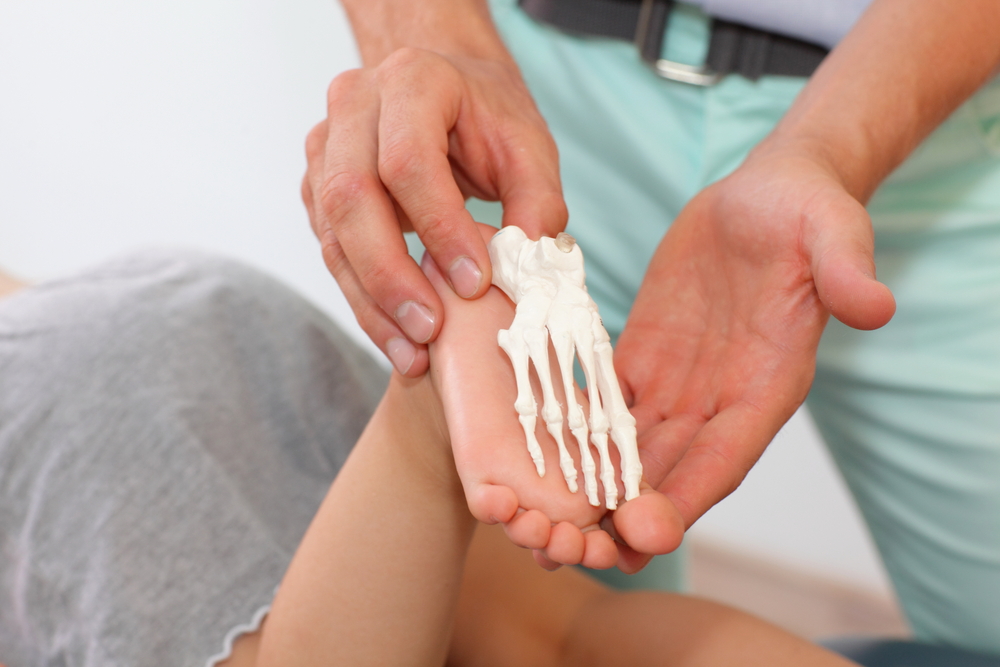
When most people think about foot issues and foot pain, they think of issues that arise later in life. Foot problems are not unheard of in children, though they’re often hereditary. These are the most common pediatric foot issues and how we treat them at Walking Mobility Clinics across Ontario.
1) Osgood-Schlatter Disease
Osgood-Schlatter’s disease is a common reason for knee pain in growing children. With this type of knee pain, the area below the knee, where the tendon of the kneecap attaches to the shinbone, becomes inflamed. It most commonly occurs during growth spurts when the bones, muscles, tendons and other structural parts of the knee are changing and growing rapidly. Physical activity and sports that involve running or jumping put additional stress on these bones and muscles, which means that more active children are more likely to develop Osgood-Schlatter disease.
Osgood-Schlatter disease is most common in boys around the age of 12, though it affects girls as well. We recommend starting with the RICE technique: rest, ice, compression and elevation. Treatment for this condition can also include foot orthotics if faulty foot mechanics are contributing to the problem. For some cases, we recommend a patellar tracking knee brace to help keep the patellar tendon aligned. The brace will often have a hollowed out pocket where the area is most painful (on the bump) so as not to further irritate the area.
2) Sever’s Disease
Sever’s disease is also referred to as retrocalcaneal apophysitis. This painful bone disorder results in inflammation of the growth plate at the back of the heel where the achilles tendon attaches. This plate is at the end of a developing bone, where cartilage changes to bone. The plates expand and unite with this growth, so growth spurts in adolescence are the most common time for this type of heel pain. It can begin any time between the ages of 8 and 13 for girls and 10 and 15 for boys, and usually stops when the growth plate hardens and the bones turn into mature bone.
This type of heel pain can occur in any child, but most commonly in children with pronated feet, flat or high arches, short legs or those who are overweight. It presents itself as swelling and redness in the heel, difficulty walking, and discomfort when the heel is squeezed on both sides. Orthotics with a slight temporary heel lift help to unload the strain on the tendon, while shoe modifications can create an excavation around the sensitive area.
3) In-Toeing and Out-Toeing
Some toddlers, when learning to walk, may present signs of in-toeing or out-toeing. In-toeing is also referred to as walking “pigeon-toed,” where the feet turn inward. Out-toeing is the opposite, where the feet point outward, and is commonly referred to as walking “duck-footed”. Both are fairly common, do not cause pain, and usually improve as your child grows older and learns to walk.
Some toddlers may walk this way because of a slight rotation of the upper or lower leg bones. This can be caused by a family history. If you become concerned or your child’s walking doesn’t improve naturally, there are specific orthotic interventions that can be used to help children in these situations. Often, we recommend a device called a gait plate, a rigid orthotic device that is cut into the outline of the shoe to encourage a straighter gait.
It’s important to pay close attention to your child’s foot or ankle problems, and to keep an eye out for any signs or symptoms of pain, abnormal gait, limping or other changes in your children’s legs, ankles and feet.
Most children have flat feet, as the arch doesn’t fully develop until adolescence. However, it’s always better to seek medical advice earlier rather than later, so get a referral to a Walking Mobility Clinic near you if you suspect your child might have some pediatric foot issues.

